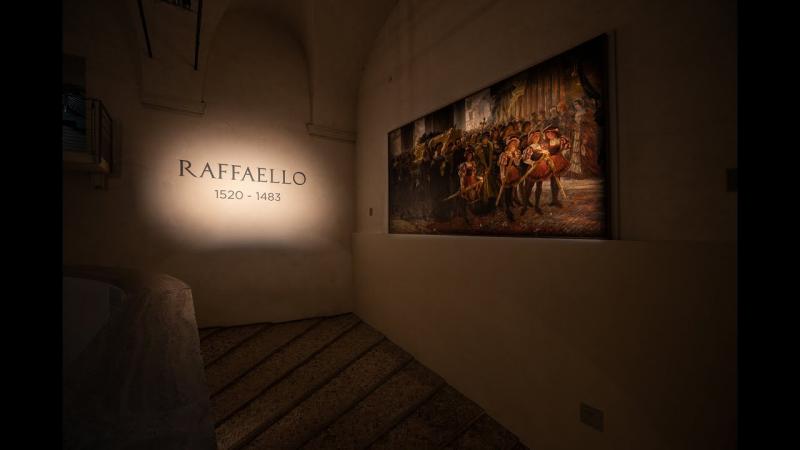The largest exhibition ever organized entirely devoted to Raphael, ‘Raffaello 1520-1483’ opened on March 5 at Rome’s Scuderie del Quirinale and had to close a few days later due to Italy’s nationwide lockdown.
As of June 2, as lockdown restrictions continued to ease, the exhibition opened to the public again (during the quarantine, a series of YouTube videos on the Scuderie del Quirinale’s channel made it possible to enjoy parts of the exhibition virtually).
The exhibition, organized for the 2020 celebrations marking the 500th anniversary since Raphael died at the age of 37 (April 6, 1520), features more than 200 paintings and sketches by the artist from Urbino.
‘Raffaello 1520-1483’, now extended until August 30, is in such high demand that the organizers decided to extend the show’s hours, which will be open at times normally unthinkable for Italian museums. Visiting hours have been extended until 11pm during the week, and until 1am on weekends. The museum opens at 8 am.
Tickets for the new time slots are available for sale only online from the Scuderie del Quirinale's website.
According to the latest government decree, it is possible to increase the maximum number of visitors per time slot from 6 to 8 people, with admission scheduled every 5 minutes.
At the entrance, visitors are subjected to a procedure that includes a decontamination mat, body temperature detection and hand sanitization.
The visit lasts about 75 minutes; visitors can use a new audio guide, available for free by downloading the Scuderie del Quirinale app on their mobile phones.
The exhibition is the largest ever attempted to date, with more than 200 works, of which 120 by Raffaello himself.
Loans come from the Uffizi Gallery, which has collaborated to the organization of the exhibition and is sending several paintings never exhibited in Rome before, the Vatican Museums, also among the show’s partners, the Louvre, the National Gallery and the British Museum in London, the Prado museum, the National Gallery of Art in Washington, and more.
The exhibition focuses in particular on Raphael's Roman period, when he came into contact with powerful and wealthy patrons, thus obtaining prestigious commissions which paved the way for his successful artistic career. It then proceeds backwards, from Rome to Florence, from Florence to Umbria, to conclude in his native Urbino. Examining Raphael’s career in reverse chronological order is meant to show the visitor how he fully developed his unique classical style in Rome, the city that best assimilated the influence of ancient art.
Among the works on view are the famous Madonna del Granduca from the Uffizi, Santa Cecilia from the Pinacoteca in Bologna, the Madonna Alba from the National Gallery in Washington, the Self-Portrait with a friend from the Louvre, and La Velata, also from the Uffizi.
For the first time, the portraits of the two popes who commissioned the most works to Raphael will be compared in the same place: the portrait of Julius II from the National Gallery in London and the one of Leo X with the cardinals Giulio de’ Medici and Luigi de’ Rossi from the Uffizi.













